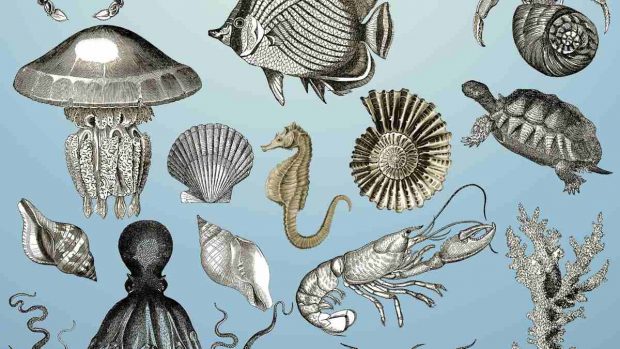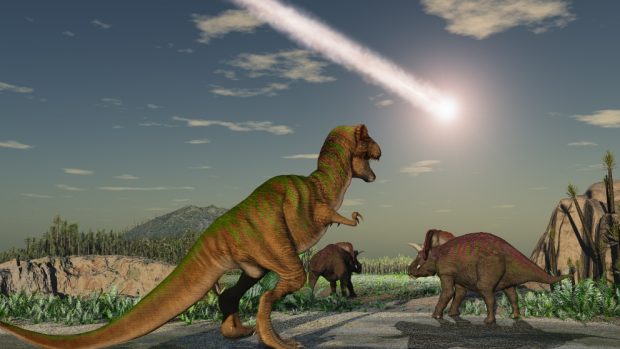In a desert area on the southern coast of Peru, A group of scientists identified an old animal that was initially considered the heaviest animal in history. It is a prehistoric whale, extinct a long time ago, called Perucetus Colossus whose size remains a mystery to researchers.
The fossils of this huge creature were discovered more than 14 years agobut due to its size and shape, it took about 3 years to transfer it to Lima. Since then, it has been thoroughly studied by a team of researchers led by paleontologist Mario Urbina.

The Perucetus Colossus: an amazing marine creature
Although much of the fossil pieces were incomplete, the researchers managed to collect a lot of information about this old gigantic whale. One of the most obvious findings of this creature is that their bones were extremely densedue to a process called osteosclerosis, in which internal cavities are filled.
They were also huge and grew even more on their outer surfaces, through a process known as pachinostosis. This characteristic led researchers to believe, initially, that Perucetus colossus weighed about 180 metric tonssurpassing the weight of the blue whale.
Recently, the scientists of the University of California in Davis and the Smithsonian Institute again reassessed the skeleton of the creature to obtain a more precise estimate of its shape and its body mass. After a thorough study they concluded that The whale could have weighed between 60 and 70 tons, A weight range similar to that of the sperm whales.
Main characteristics of Perucetus colossus
Inhabited Peru’s waters 39 million years ago
The Great Perucetus Colossus inhabited Peru 39 million years ago, that is, during the second era of the Paleogen called Eocene. His remains, which were found the ocucaje desert, indicate that It was an animal -size animall, comparing with the sperm whales, which also have an impressive size.
A colossal size creature

Among the recovered pieces are 18 bones of the basilosáurid (a primitive type of whale), 13 vertebrae, four ribs and part of a hip bone. From them, the researchers managed to partially rebuild their anatomy, which in turn allowed them to better understand the evolution of cetaceans.
According to Dr. Rebecca Bennion of the Royal Belgian Institute of Natural Sciences in Brussels, Each whale vertebra weighs more than 100kg and its bones were so dense That when drilling one of the vertebrae, the drill broke down.
Comparison with the great blue whale
Frequently, researchers use in their studies as a comparison a skeleton of a blue whale, since the largest recorded in the era of commercial exploitation, weighed around 190 tons. The first estimates of weight and size of Perucetus colossus placed it in a range very close to the blue whalehowever, it was confirmed that its size is more adjusted to that of the puppets.
The sperm whales are commonly known for enduring extreme pressures in the sea and for their ability to immerse themselves at great depths. These similarities suggest that Perucetus shared the same evolutionary adaptations of the sperm whalesso he could have survived in a challenging aquatic environment. However, due to the lack of fossil remains, it is difficult to determine exactly the behavior of this fascinating creature in the sea.
Impact of bone density and pachinosis
Pakostosis, or the thickening of bones, is a typical characteristic of some modern aquatic mammals, such as manatees. This phenomenon can interfere with the float and the apparent weight of an animal in its habitat. In the case of Perucetus Colossus, pachinosis was not related to the disease itself, but rather with adaptations that allowed it to float when looking for foods in shallow waters.
In addition, researchers explain that, although pachinosis can provide evolutionary advantages, It does not necessarily imply a proportional increase in the weight of the animal.
To be able to better understand Perucetus colossus, Researchers need to find more fossil evidence, especially skulls or teeth In order to determine how your food and behavior, among other important data.
A look at its ecosystem
The discovery of Perucetus Colossus also offers a fascinating window towards the eocene marine ecosystem. During this period, the oceans were very different from those we know today. They were home to a variety of species that have not survived to this day. The cetaceans, in particular, were in an early evolutionary phase, and Perucetus Colossus seems to have played an important role in the dynamics of their habitat.
This giant cetacean coexisted with other marine predators, as well as with various species of fish and crustaceans. The competence for resources, predation and environmental conditions would have influenced their evolution and those of other marine organizations of the time.










